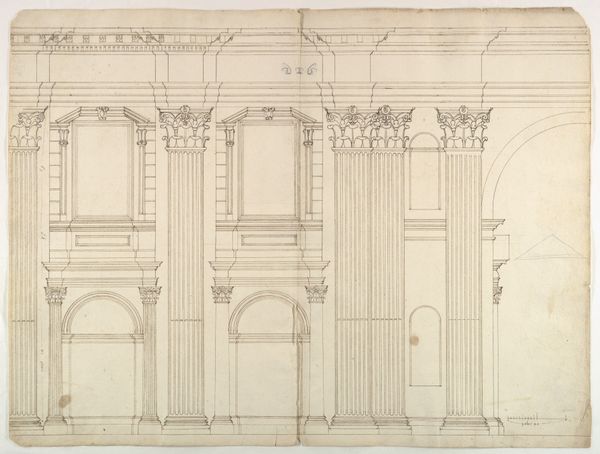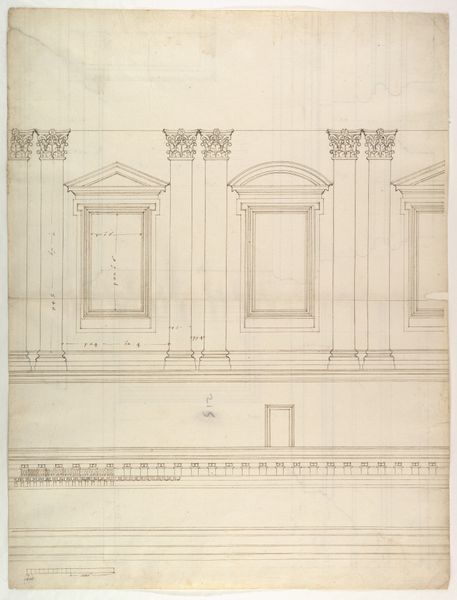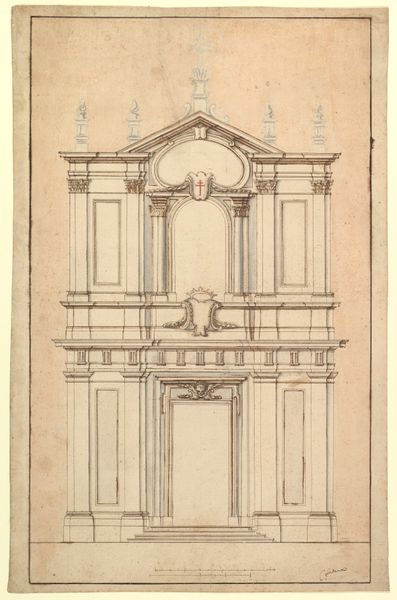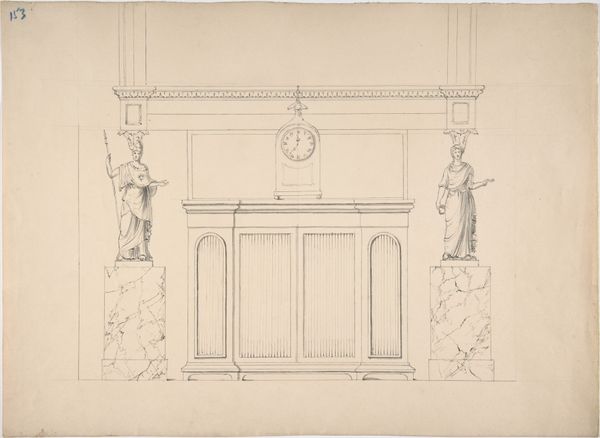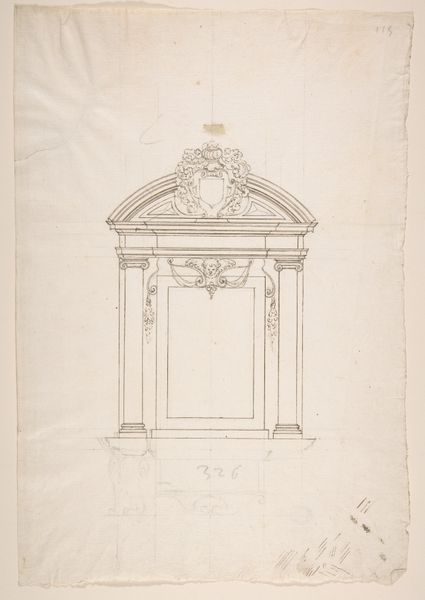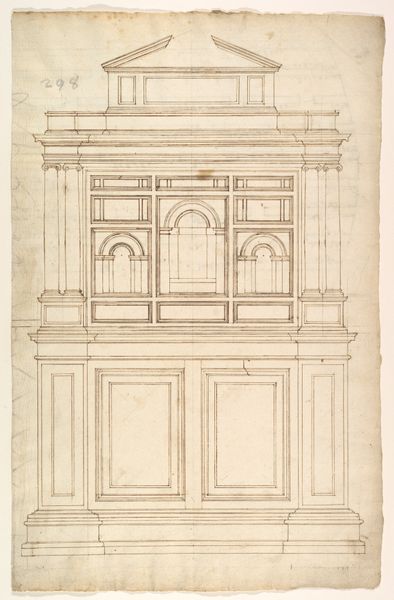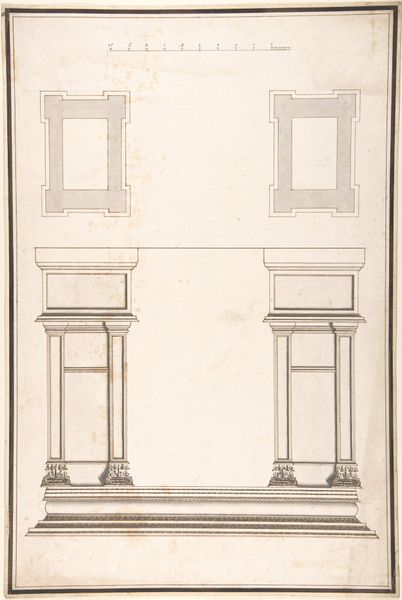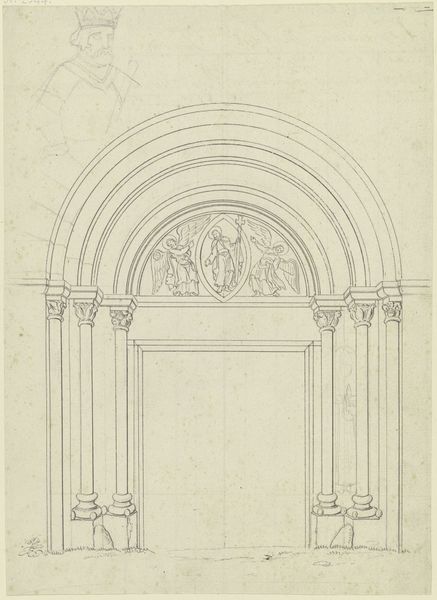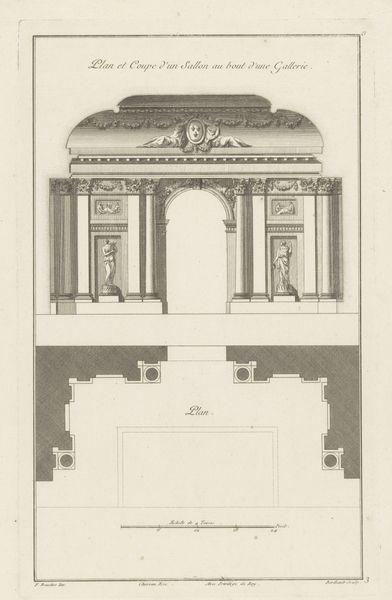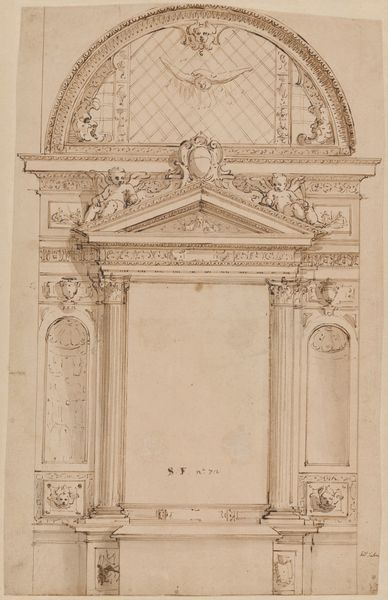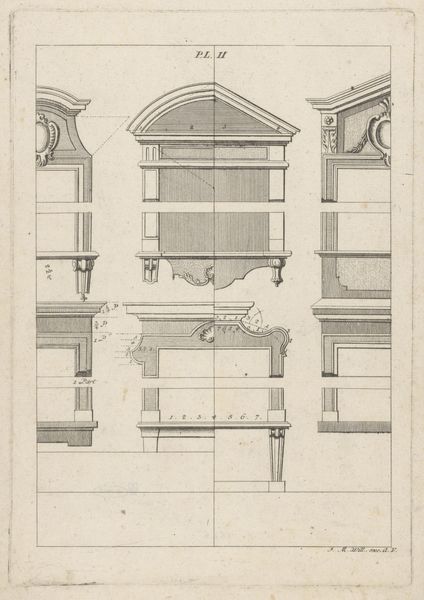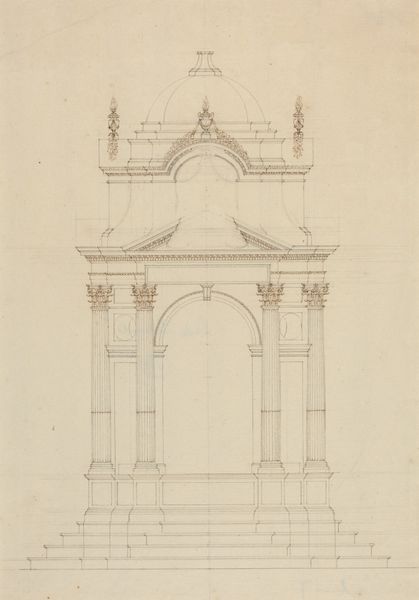
drawing, print, architecture
#
drawing
# print
#
perspective
#
form
#
geometric
#
line
#
italian-renaissance
#
architecture
Dimensions: 17-1/4 x 12-3/4 in. (43.8 x 32.4 cm)
Copyright: Public Domain
Curator: We're now looking at "Design for a Facade," a drawing by Pietro Paolo Coccetti from around 1710 to 1727. It's currently held at the Metropolitan Museum of Art. What's your first impression? Editor: Stark. Terribly sparse, isn't it? All I see are lines struggling to become something substantial. What materials were typically employed in structures like this? Curator: Functionally, it operates within established Renaissance architectural principles. The clear, concise lines speak volumes about the conceptual purity the artist was striving for, revealing his meticulous attention to geometric structure. Look at the implied depth achieved with such economical means. Editor: But depth without the weight of actual material seems…hollow. One wonders about the hands that would transform these lines into stone. About the laborers, their working conditions. Who profits from the construction, what purposes does the finished building serve? All obscured, isn't it, by this decontextualized depiction? Curator: But to become enmeshed solely within such considerations would diminish the compositional balance. The calculated interplay between voids and solids guides the eye purposefully. Notice how the unadorned surfaces throw the linear patterns into high relief. It is less an anticipation of practical labor and more a celebration of abstract perfection. Editor: Still, how does the materiality, or lack thereof in the drawing itself, affect its perceived value? This meticulous plan speaks volumes, sure. But plans on paper meant nothing without human exertion to turn them into inhabitable space. So, in turn, where's the emphasis here? Design detached from execution. Curator: Coccetti offers a study in the architecture of thought, revealing the intrinsic order of design that will later materialize into lived space. Editor: Yes, thought abstracted, filtered by the privilege to conceive such geometries, but missing, to my eye, that crucial grounding in physical realities. Curator: A potent tension, perhaps, between conceptual ideation and tactile implementation, allowing us to consider just that. Editor: Exactly. Maybe these drawings weren't quite meant for the masons' hands, but the patron's mind.
Comments
No comments
Be the first to comment and join the conversation on the ultimate creative platform.

